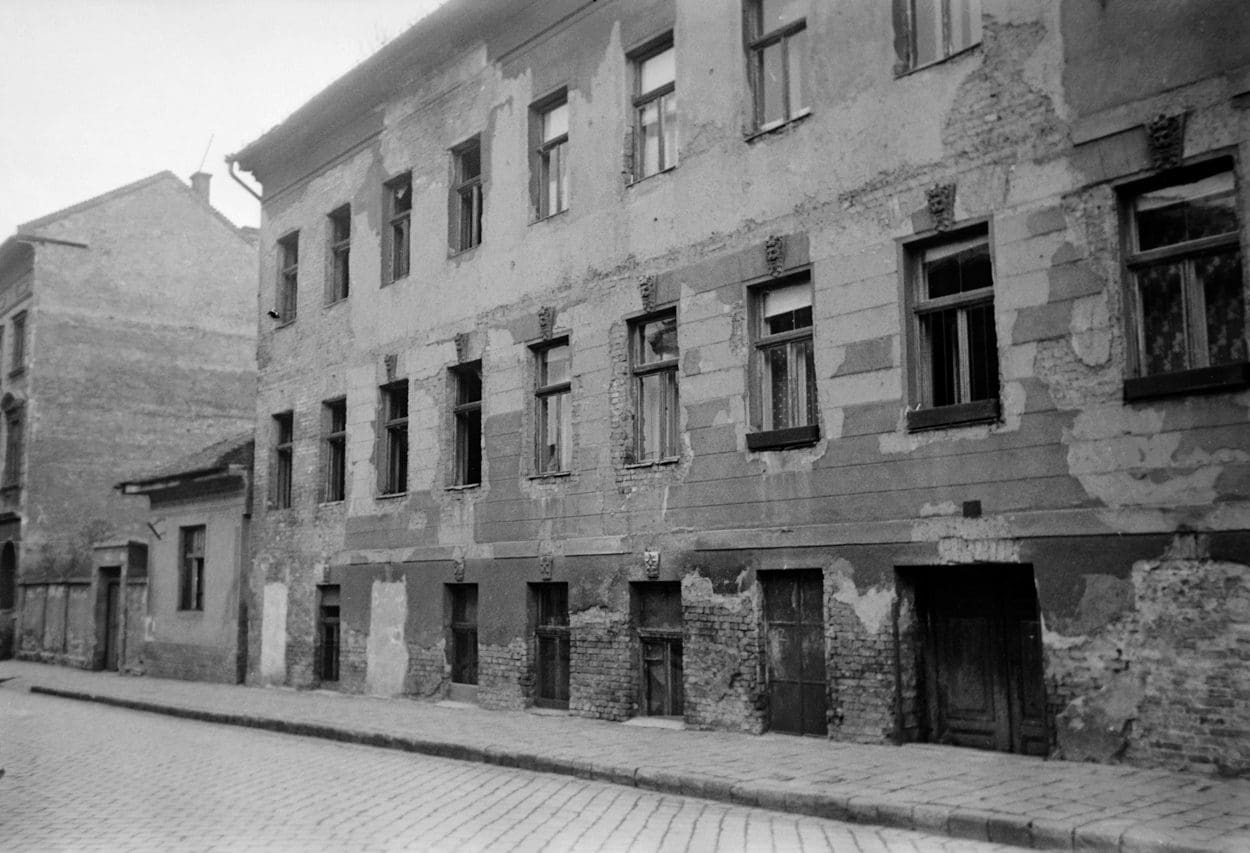We have already written about the wave of mass migration that followed Hungary losing two-thirds of its territories as a result of the Trianon peace treaty in 1920. After initially putting the refugees up in wagons, as we detailed in our earlier article, the government launched a programme to alleviate the housing shortage. Under the scheme, six thousand flats were handed over to families living in wagons in Budapest alone, and nearly two hundred in country towns such as Miskolc. These were ‘just emergency flats consisting of a room, a pantry and a toilet’, according to one ministerial observer—but their quality left a lot to be desired. i]
According to a survey conducted in 1921, just over half of these provided ‘normal family conditions’, with an administrative report from Miskolc referring to the dwellings as ‘decrepit wooden shacks’.[ii] Even so, the well-informed military officer Miklós Kozma wrote in his diary that the ‘housing problem had been solved’, and ‘if you travel around the country by train, you can see the new settlements that have sprung up near the villages, with the new homeowners’ mostly primitive little huts’.[iii]
A soup kitchen was also set up in Budapest for the refugees,
where the food was tasted by Countess Albert Apponyi (wife of Albert Apponyi, who was the head of the Hungarian peace delegation at Paris) and the Japanese ambassador—they apparently liked it very much. István Bethlen (before he became PM) personally organized the care for Transylvanian refugees, allocating 5 million crowns for the cause by the spring of 1920.[iv] So many politicians actually thought that there was no need to complain: the government commissioner for housing, for example, declared already in October 1920 that it ‘bored’ him to speak of the issue, explaining that ‘the whole reticence’ on the part of the wagon-dwellers reluctant to move into their huts was ‘nothing more than a prejudice…since there are also wooden huts in the Tatras [in today’s Slovakia], where people live in the winter, and we know how much colder it is there’.[v] At a meeting of ministers, it was also said that ‘the wagon-dwellers themselves are very picky. Many do not want to occupy flats on the grounds that they are supposed to be full of bugs’, and that it would be best ‘to have anxious wagon-dwellers unwilling to move out of their wagons removed by the authorities’.[vi] One journalist also witnessed a conversation in which a state official told a female refugee who was asking about the conditions of the offered accommodation that ‘if she is picky, she surely does not need it’.[vii]
However, contemporary press reports make the suggestion that refugees were prejudiced against such temporary housing questionable. And the reports are numerous, as visiting refugees squatting in their shanties soon became a popular genre among journalists. One newspaper reported on the difficulties the refugees faced in accessing housing: ‘It is a serious mistake that the administration at the housing office is terribly slow and by the time a housing permit is granted to a wagon-dweller, the home [that refugee had been originally assigned] has already been allocated to another refugee…who is living there’.[viii]
If there were indeed people who complained about the housing they received, they had good reason to do so, judging from the reports.
One right-wing paper visited a family living in public housing: ‘In the makeshift flat we found the many members of the Tar family. Twelve of them are sleeping in the room, which also serves as a kitchen. A small, shrivelled, living skeleton moves around in a basket: it is an eight-month-old child suffering from stomach atrophy, truly no bigger than a medium-sized cat. Cold water is dripping from the ceiling and the wind whistles cruelly through the broken window.’ ‘It was better in the wagon,’ says Mrs Tar sadly. ‘Because at least it was heated, but here we shiver all day, and we will all catch a deathly disease’.[ix]
When the reporter took a look inside another flat allocated to refugees, he found that ‘The ceiling of the room is cracked and the walls are lined with long streaks of dirty water. The stormy wind blows through the room, entering through the cracks in the window.’ ‘Are you satisfied with the flat?’, the reporter asked. ‘It was better in the wagon. Here, water is dripping on our heads and the wretched paper wall collapses in a day’. An eighty-year-old refugee from Szatmárnémeti (Satu Mare in Romania) is taking care of a baby, but there are five more around. ‘We saw many children dressed in rags on our way here, but it was nothing like this. These children are not wearing ragged clothes, they are downright naked. Here, too, the ceiling has wide cracks in it, and when it rains, the cold showers drench the six orphaned children.’[x]
A mother complained that at night
three rats had sneaked into the cot of her four-month-old baby in the barracks where she was housed.[xi]
When László Budaváry visited former railwaymen living in shacks near Dunakeszi, they ‘dropped to their knees…begging for at least a handful of coal, a handful of flour, or if there was none, cow corn, so that they could give their poor children something to eat’.[xii]
The state-financed construction of these shanty towns began at the end of 1920, and most of them continued to exist throughout the 1930s, with some being expanded as late as in the 1940s. Some were named after their surroundings, while others had more telling names: one was called the Jerusalem row, another was named after Tripolis, and then there was Lóversenytér (horse racing square). As the majority of the settlements were inhabited by refugees from the lost territories, the streets between the shacks were given nostalgic names, after settlements in the lost territories, such as Gyergyó Street, Kolozsvári Road, or Bártfai Alley.
Life in these shantytowns was indeed miserable—but that will be the topic of another article.
[i] Gábor Gyáni, Bérkaszárnya és nyomortelep. A budapesti munkáslakás múltja, Budapest, Magvető, 1992, 108–109, 147.
[ii] Dezső Nemes and Elek Karsai (eds.), ‘Az ellenforradalmi rendszer gazdasági helyzete és politikája Magyarországon, 1924-1926’. In: Iratok az ellenforradalom történetéhez, 1919-1945 Vol. III, Budapest, Szikra, 1959, 375, 382.
[iii] Nemes and Karsai (eds.), ’Iratok az ellenforradalom történetéhez, 1919-1945 Vol. III, 391.
[iv] Emil Petrichevich-Horváth, Jelentés az Országos Menekültügyi Hivatal négy évi működéséről, Budapest, Pesti, 1924; Ignác Romsics, Bethlen István. Politikai életrajz, Budapest, Osiris, 2005, 144, 155.
[v] Szózat, 3 Oct. 1920.
[vi] Magyar Nemzeti Levéltár Országos Levéltára, K27. 22 Sept. 1920.
[vii] Hazánk, 21 Nov. 1920.
[viii] Nemzeti Újság, 3 Sept 1920.
[ix] Szózat, 23 Nov 1920.
[x] Szózat, 23 Nov 1920.
[xi] Nemzeti Újság, 21 Sept 1920.
[xii] Nemzetgyűlési Napló, Vol. I (1920), 23 Feb 1920, 34.








